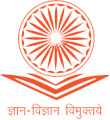可食用植物物种中砷吸收潜力的测定(Trigonellna foenum - granecum)和评估人类健康风险
Gnaana Sri Kaalieswari K.,Deep Chakraborty博士 和Krishnendu Mukhopadhyay*
和Krishnendu Mukhopadhyay*
1公共卫生学院环境卫生工程系,斯里兰卡曼德拉高等教育研究所(DU),泰米尔纳德邦,印度。
通讯作者电子邮件:krishnendu@ehe.org.in.
抽象的
砷是一种致癌和有毒元素,其具有从作物,水和土壤中的存在的高健康风险。本研究由Fenugreek(Trigonella foenum-Granecum)进行的种子进行,这是一种用于烹饪的非常常见的香料,特别是在印度。在实验室条件下已经发芽了相同数量的种子。三个浓度为例如在整个实验中使用1,2和,3mg / L的砷酸盐(As + 3)和砷酸盐(As + 5)盐溶液用于治疗植物。经过10天的萌发后,估计植物食用部分积聚的砷的浓度并评估健康风险。通过估计总叶绿素(A,B,C),类胡萝卜素含量,并采用对照和治疗厂的新鲜重量和干重观察砷浓度的影响。生物化学分析的结果显示,叶绿素和类胡萝卜素内容物低于对照植物的结果。此外,新鲜的重量和干重结果也显示出低于对照的处理。生物积累因子结果表明,森林植物的土壤砷的水平增加并不导致高砷的摄取。 From the concentration estimated in the plant body, the health risk was assessed in adults and children and found that both adults and children having a potential health risk upon consumption of fenugreek. Moreover, Incremental Life Time Cancer Risk was found high (< 10-4) which indicates the presence of potential cancer risk. Hence, it is possible to conclude from the present study that fenugreek can bio-accumulate arsenic and it may be used as an indicator plant for arsenic-contaminated areas.
关键词
砷指示器植物;砷毒性;胡芦巴;健康风险评估;增量寿命时间癌症风险
复制以下内容以引用本文:
Kaalieswari G.S,Chakraborty D,Mukhopadhyay K.在可食用植物物种中的砷吸收潜力测定(Trigonellna foenum - granecum)并评估人类健康风险。Curr World Environ 2021; 16(2)。
复制以下内容以引用此URL:
Kaalieswari G.S,Chakraborty D,Mukhopadhyay K.在可食用植物物种中的砷吸收潜力测定(Trigonellna foenum - granecum)并评估人类健康风险。Curr World Environ 2021; 16(2)。可从:https://bit.ly/3w8eqwg.
[HTML全文]

这项工作是在授权下获得的知识共享归属4.0国际许可。








